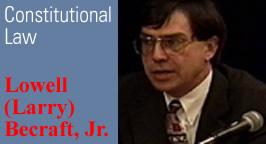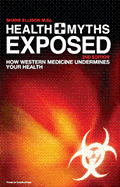ECONOMIC LIBERTY
By
Attorney Lowell (Larry) Becraft, Jr.
October 14, 2008
NewsWithViews.com
Sir Josiah Stamp, a former president of the Bank of England, is reputed to have said:
"Banking
was conceived in iniquity and was born in sin. The bankers own the earth.
Take it away from them, but leave them the power to create money, and
with the flick of the pen they will create enough deposits to buy it
back again. However, take it away from them, and all the great fortunes
like mine will disappear and they ought to disappear, for this would
be a happier and better world to live in. But, if you wish to remain
the slaves of bankers and pay the cost of your own slavery, let them
continue to create money."
Is this statement true? Do we confront this problem today? I say “yes,”
and let me explain.
In
times like these in the Fall of 2008 with abundant evidence of an economic
crash coming down on our heads, the lessons of history regarding monetary
debacles of the past are educational, and indeed very important. One
history lesson comes from France. John
Law’s paper money experiment there in the 18th century spanned
but a few years during its rise and fall, yet those events offer an
abject lesson about the social destruction resulting from the use of
paper money: France was economically and morally destroyed.
But, we need not focus on European tragedies because there are several
historical American examples of paper money experiments, some little
known, that were equally as destructive. For example, the Revolutionary
War was financed by a flood of Continental
currency that rapidly depreciated in value until it became worthless.
The prostrated economy of young America was a catalyst for assembling
in Philadelphia the convention that drafted the present U.S. Constitution.
That Constitution as understood at the time mandated a specie
currency as a medium of exchange, and the result of this monetary
correction was a revived, vibrant economy.
Those who wanted to establish banking here in this country were hard
at work as the Constitution was being ratified. The reader is directed
to William Gouge’s excellent work, A
Short History of Paper Money and Banking, for a detailed explanation
of some of the tragic, horrendous events that happened in those early
days of the banking business in our country, including the following:
“The bankruptcy of some
of the New York moneyed corporations revealed secrets to the public
which led to a legal investigation, and as it is always the practice
of the world to punish unsuccessful villainy, some of the concerned
were severely dealt with. Previous to passing sentence on them, Judge
Edwards made the following observations: ‘During the trials which
have taken place at the present term of this court, we have witnessed
displays of depravity on the part of the agents of moneyed institutions
of the most appalling nature. As common as crimes are in all great cities,
yet this community was not prepared to expect from the class of society
to which the perpetrators of the crimes belonged, a burst of such iniquity.
Their offences have been characterized by breaches of official and personal
confidence; by a course of misrepresentation and deception systematically
pursued, and by injurious and crafty devices which no ordinary prudence
could guard against. Nor was this all. Among the actors in those scenes
were some of the principal agents in the management of moneyed institutions,
and they have been found actually combining and conspiring together
for the accomplishment of their nefarious purposes. From combinations
of men of so much talent, availing themselves of their high standing,
it is not surprising that they should have swept society with the besom
of destruction. When crimes of such character, attended with such destructive
consequences abound, it behooves the tribunals of justice to gather
themselves up to meet the occasion, and to extend, as far as in them
lies, the protecting arm of the law."
On February 25, 1791, Congress chartered the first Bank of the United
States. See 1
Stat. 191, ch. 10. Incidentally, the War of 1812 happened after
the first Bank’s demise. The second Bank of the United States
was created on April 1, 1816, with a 20 year charter. See 3
Stat. 266, ch. 44. These banks were no different from the others
discussed in Gouge’s work and earned the enmity of Andy Jackson,
New Orleans’ hero. This great Tennessean was elected President
in 1828 and, as a mortal enemy of the second Bank, was instrumental
in having Gouge’s work published. Nicolas Biddle was then president
of the second Bank of the United States, the charter of which was to
expire in 1836. Four years before the charter was to lapse, Biddle chose
to ask Congress for a charter extension, which resulted in a political
battle with President Jackson. Congress approved and sent its bill to
re-charter the Bank to President Jackson on July 4, 1832, but he vetoed
that bill the following week. Congress lacked the votes to override
that veto, and the bank was doomed.
In
the time leading up to that important Congressional vote and for several
years thereafter, Biddle deliberately
contracted the supply of the Bank’s paper money notes to cause
tragedy and ruin for American businesses and families. In addressing
other misdeeds of Biddle’s bank, the book Coming
Battle relates:
“The rottenness of the bank
then became known, and a complete investigation into its management
from 1830 to 1836, instituted by the stockholders, developed an astonishing
degree of villainy, corruption, and rascality that was appalling, and
the results of which more than sustained the charges brought against
it by President Jackson and his supporters.
“It was discovered that hundreds
of thousands of dollars were expended by President Biddle in influencing
elections, subsidizing the press, and bribing members of Congress.
“The stockholders, on the
completion of this investigation, instituted a suit against President
Biddle in the United States circuit court at Philadelphia, for the sum
of $1,018,000 expended by him for which no vouchers could be found.
“It was further demonstrated
that, from 1830 to 1836, during the struggle of the bank for a new lease
of corporate life, loans, aggregating more than $30,000,000, were made
by its president to members of Congress, editors of newspapers, politicians
of all grades, jobbers and brokers, mostly without security.
“The career of the United
States Bank and its president is an awful monument of warning on the
highway of time to come, an object lesson to that colossal greed of
power, which, to tighten its grip upon the people, scatters distress
and ruin in its train, and which, from its ramparts of ill-gotten wealth
obtained by monopoly and special privileges, defies the laws of man
and the laws of God.”
The paper money experiment of John Law demonstrates the serious deficiencies
of using paper money as a medium of exchange and the harm that results
when it collapses. The pattern evident in that French event has been
followed by many others, such as the hyper-inflation of the Weimar
Republic after WWI, and the present hyper-inflation occurring today
in Zimbabwe.
The battle between President Jackson and Biddle’s second Bank
of the United States demonstrates that the people can triumph against
the banking beast. If they don’t, Thomas Jefferson’s warning
about banks can become a reality:
“If the American people ever
allow private banks to control the issue of their currency, first by
inflation, then by deflation, the banks will deprive the people of all
property until their children wake up homeless on the continent their
fathers conquered. The issuing power should be taken from the banks
and restored to the people, to whom it properly belongs.”
What we use today as money, our medium of exchange, is basically an
empty promise, created in the same fashion as the banknotes of the “wildcat
banks.” Before the Civil War, a small reserve of gold and
silver coins could support a multiple of that amount in outstanding
bank notes. With a mere reserve of $10,000 in coin, a banker could issue
a circulation of $30,000, $50,000, perhaps $100,000 in outstanding banknotes.
But often, these banks failed in a few years, to the harm of those who
dealt with them, depositors, borrowers and customers alike. To “remedy”
the problem of the “wildcat banks”, the National Banking
Act of February 25, 1863, 12
Stat. 665, ch. 58, was enacted; it created national banks and permitted
“legal tender Treasury notes” to be used as reserves.
The Federal Reserve Act, 38 Stat. 251, ch. 6, was enacted on December
23, 1913, and it expanded the banking scheme first set by the National
Banking Act. With this system in place in time for WWI, the federal
government had a ready buyer for its bonds needed to finance that war.
Shortly after WWI, the Federal Reserve Board met and agreed upon a deliberate
contraction of the “credit supply,” consequently crushing
American agriculture and a great many rural banks. This was followed
by a currency expansion during the “roaring twenties”, which
ended with a currency contraction starting in October, 1929, the results
of which are known to most thinking Americans.
Today, the monetary unit we use as currency is the Federal Reserve Note
(“FRN”). Our present-day banks operate no differently from
the banks of the early or mid-19th century, and bank reserves are at
best a pile of FRNs. But most often, bank reserves are nothing but deposits
(bookkeeping entries) held by the banks at one of the Federal Reserve
Banks. These reserves support a multiple of outstanding “notes,”
which today are nothing but bookkeeping entries that we keep in our
checking accounts. We assign or transfer these monetary claims we have
against banks to somebody else when we write a check. Thus the basic
monetary unit, the FRN, supports many multiples of outstanding credit,
represented by computer bookkeeping entries. Most likely, FRNs constitute
less than 3% of our money supply. But furthermore, since all of this
credit is “borrowed” into circulation, the system is designed
to transfer wealth to bankers since aggregate
social debt exceeds the amount of credit in circulation.
Credit, the vast bulk of our “money” supply, is defined
by 12
C.F.R. § 226.2, as “the right to defer payment of debt,
or to incur debt and defer its payment”; essentially, credits
are thus mere promises. When an American borrows money from a local
commercial bank, that bank merely credits the borrower’s checking
account with a bookkeeping entry. That borrower then via checks drawn
on that account transfers various amounts of that credit in his account
to somebody else. Whatever you have in your present checking account
was originally the proceeds of a loan from some American commercial
bank, or the proceeds of governmental borrowing.
In essence, more than 97% of our money supply is nothing more than the
credit promises of our private commercial banks. Simply put, this money
supply does not exist as anything more than empty numbers, ephemeral
legal claims or worse, just a concept. All of this credit is economically
unified so that just a few powerful men can make a decision to either
expand or contract the amount of outstanding bank credit. Carefully
timed contractions of the credit supply are the “harvest”
for this monetary mechanism. Some of our fellow Americans are credit
wolves, preying upon other innocent Americans.
The
American economy was vibrant and growing in the early 1830s and there
were no natural impediments to further growth. Yet in those years, the
American economy was harmed through no fault of its own, but instead
by the actions of Nicolas Biddle, who deliberately, willfully and maliciously,
intending grievous harm, contracted the supply of bank notes. Similarly,
the American economy after WWI was poised for natural and healthy growth.
By that time, the power of Biddle was possessed by a small group of
men on the Federal Reserve Board, and in May,
1920, they agreed to deliberately contract the money supply, bringing
ruin to many. The “business cycle” is really a banking cycle,
which expands and contracts business activity on its own terms. The
noted economist Milton Friedman has criticized this banking cycle in
this fashion:
"The power to determine the
quantity of money...is too important, too pervasive, to be exercised
by a few people, however public-spirited, if there is any feasible alternative.
There is no need for such arbitrary power ... Any system which gives
so much power and so much discretion to a few men, [so] that mistakes
- excusable or not - can have such far reaching effects, is a bad system.
It is a bad system to believers in freedom just because it gives a few
men such power without any effective check by the body politic - this
is the key political argument against an independent central bank."
Perhaps an excellent description of this monetary system appears in
the Supreme Court’s decision in Thorington
v. Smith, 75 U.S. 1 (1869), a case that concerned the validity
of the Civil War Confederate currency. There, the Court described that
currency in the follow fashion:
"As contracts in themselves,
except in the contingency of successful revolution, these notes were
nullities; for, except in that event, there could be no payer. They
bore, indeed, this character upon their face, for they were made payable
only 'after the ratification of a treaty of peace between the Confederate
States and the United States of America.' While the war lasted, however,
they had a certain contingent value, and were used as money in nearly
all the business transactions of many millions of people. They must
be regarded, therefore, as a currency imposed on the community by irresistible
force," Id., at 11.
"Considered in themselves,
and in the light of subsequent events, these notes had no real value,
but they were made current as dollars by irresistible force. They were
the only measure of value which the people had, and their use was a
matter of almost absolute necessity. And this use gave them a sort of
value, insignificant and precarious enough it is true, but always having
a sufficiently definite relation to gold and silver, the universal measure
of value, so that it was always easy to ascertain how much gold and
silver was the real equivalent of a sum expressed in this currency,"
Id., at 13.
How different is today’s FRN from Confederate currency?
The
present American economy is thus completely dependent on a monetary
system created and operated by private commercial banks, whose unified
voice speaks through the Federal Reserve System, and whose “reserve
currency” is no different from Confederate currency. As of this
moment, this system is crumbling, either as the result of accident,
or the malevolent decisions of men controlling this system. Are Americans
left without any remedy and destined to have their lives ruined with
no recourse?
The United States Constitution contains several express monetary provisions.
Via Art. 1, §8, Congress is granted the power to coin money and
regulate its value. The States, pursuant to Art. 1, § 10, cannot
make anything other than gold and silver coin a tender in payment of
debts. Does Congress have some constitutional duty to establish a monetary
system that works for the benefit of the American people rather than
vested financial interests?
In United States
v. Marigold, 50 U.S. 560, 567-68 (1850), the Supreme Court
was confronted with the matter of whether certain federal laws making
penal the counterfeiting of coins was constitutional. Here, the Court
clearly explained the monetary duties of Congress:
"They appertain rather to the
execution of an important trust invested by the Constitution, and to
the obligation to fulfill that trust on the part of the government,
namely, the trust and the duty of creating and maintaining a uniform
and pure metallic standard of value throughout the Union. The power
of coining money and of regulating its value was delegated to Congress
by the Constitution for the very purpose, as assigned by the framers
of that instrument, of creating and preserving the uniformity and purity
of such standard of value * * *.
"If the medium which the government
was authorized to create and establish could immediately be expelled,
and substituted by one it had neither created, estimated, nor authorized
– one possessing no intrinsic value – then the power conferred
by the Constitution would be useless – wholly fruitless of every
end it was designed to accomplish. Whatever functions Congress are,
by the Constitution, authorized to perform, they are, when the public
good requires it, bound to perform; and on this principle, having emitted
a circulating medium, a standard of value indispensable for the purposes
of the community, and for the action of the government itself, they
are accordingly authorized and bound in duty to prevent its debasement
and expulsion, and the destruction of the general confidence and convenience,
by the influx and substitution of a spurious coin in lieu of the constitutional
currency."
Has not a powerful monetary consortium, by stealth, conniving and who knows what else, replaced Constitutional currency with another currency no better than Confederate “money”? Has not this consortium used its wiles to persuade Congress to ignore its constitutional duties to the American public? I say this has happened, to our great detriment.
|
Subscribe to the NewsWithViews Daily News Alerts! |
On Friday, October 3, 2008, Congress and the President rescued our banking and currency system by authorizing more than 700 billion bux in public debt to be used to purchase non-performing assets from private commercial banks for the purpose of “thawing” frozen credit. The real wealth represented by this amount is astronomic: news reports declare that this amount equals the value of all homes in several large States. This amount, in conjunction with the amount of “bux” the Fed has created in recent weeks and dumped into the “system,” conservatively approaches 10% of our annual GDP. This problem arises not, however, from the defects in the real American economy, but instead from the inherent instability of fractional reserve banking. This new law fails to remedy this banking flaw and only makes it more profound. What if this amount of real wealth had been used, instead, to provide a real monetary system beneficial to the American people? In these troubling times, wouldn’t it be better if Congress actually performed its duties expressed in United States v. Marigold, supra, and provided the American people with an existing, valuable currency, a real “dollar” instead of a fake? When this was done back in the 1790s, prosperity returned to America.
� 2008 Lowell Becraft - All Rights Reserved














